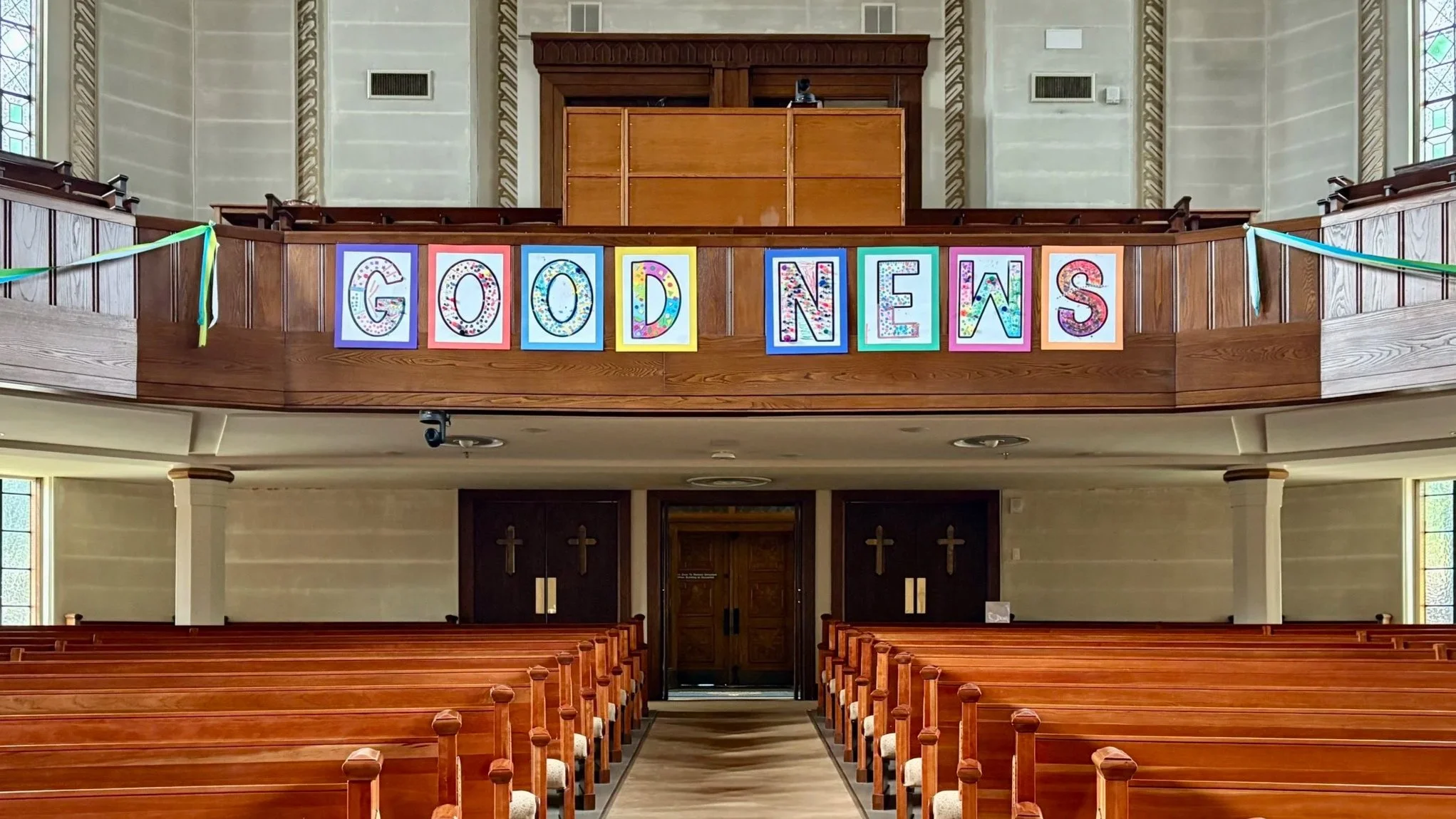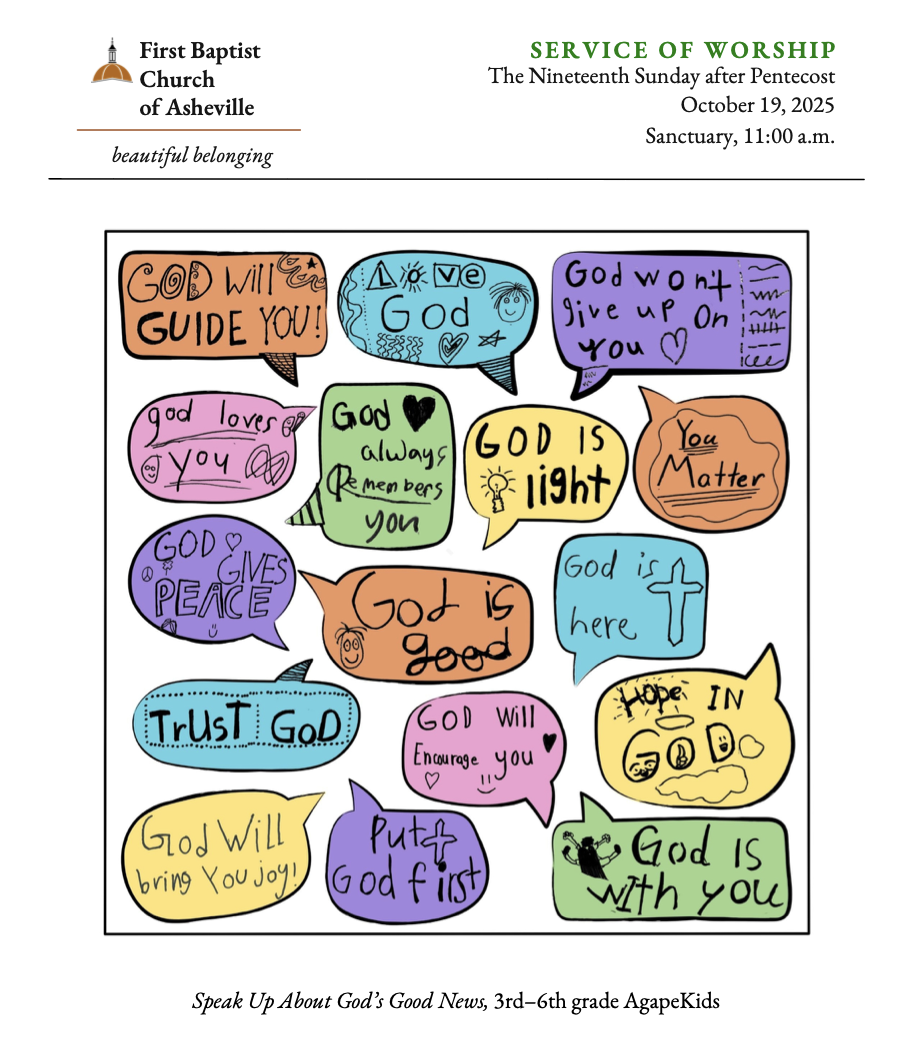Good News
From my perch on the third row of the choir loft, my eyes were repeatedly drawn to the eight sheets of poster board affixed to the balcony rail - decorations for Children’s Sabbath. Each sheet featured a colorful capital letter; when combined, the posters spelled out two words: GOOD NEWS.
As I listened to the children in our community of faith lead our liturgy - singing, reading, and praying - those posters served as a two-word lectio divina prompt: What is good news - for these children and for the world?
Earlier this month, I read Zach Lambert’s new book Better Ways to Read the Bible: Transforming a Weapon of Harm into a Tool of Healing. In the book’s introduction, Lambert lists the four lenses through which he had been taught to read the Bible, lenses that can often lead to harm: the literalism lens, the apocalypse lens, the moralism lens, and the hierarchy lens.
Next, Lambert contrasts those harmful lenses with four healthy ones used by ancient and modern readers of Scripture, lenses that lead to “greater spiritual wisdom, personal freedom, and communal flourishing.” These lenses are: the Jesus lens, the context lens, the flourishing lens, the fruitfulness lens.
As I pondered the poster boards during worship, I was mindful that the meaning of “good news” depends on which lens a person chooses to use to read scripture. As Rachel Held Evans observed in her book Inspired: Slaying Giants, Walking on Water, and Loving the Bible Again, the meaning depends on who you ask. In her chapter focused on gospel stories, she considers the implications of Jesus’ good news for a variety of folks - the woman at the well, Galilean children, the bleeding woman, and the blind beggar - as well as the writers who recorded their narratives.
When Jesus picked up the scroll and began to read the words of the prophet Isaiah in the synagogue in his hometown of Nazareth, he intoned: “The Spirit of the Lord is upon me, because he has anointed me to bring good news to the poor. He has sent me to proclaim release to the captives and recovery of sight to the blind, to set free those who are oppressed, to proclaim the year of the Lord’s favor” (Luke 4:18-19). After making a hasty (and mysterious) exit from the irate crowd, Jesus headed for Capernaum to continue preaching. When folks there begged him to stay, he declined, saying, “I must proclaim the good news of the kingdom of God to the other cities also, for I was sent for this purpose” (Luke 4:43).
The good news of the kingdom of God that Jesus preached and embodied in the first century was centered on the here and now: a message of hope for the marginalized, a proclamation of freedom for the oppressed, a promise of healing for the suffering. “The kingdom of God is among you,” Jesus declared (Luke 17:21).
This is not how the good news was conveyed to me in the churches of my childhood, youth, and young adulthood. The good news was narrowly interpreted to refer to a specific understanding of salvation: Believe in Jesus and recite the sinner’s prayer so you won’t burn in hell for all eternity. There’s your fear-based good news.
As I watched the children leaning forward in their pews to listen to our pastor preach from the floor directly to them on our Children’s Sabbath, I prayed silently that these precious youngsters would recognize how deeply loved they are - by God and by our church. The word “flourish” came to mind. I want them to flourish spiritually. I hope they will never need to deconstruct the faith they were taught as children, like so many adults I know are now doing.
I need to hear the good news as much today as I did when I was child sitting in the pews of a Baptist church in West Tennessee. I know I need to keep reading and rereading the gospel stories using healthy lenses, asking questions, inviting fresh revelations. I continue to gain insight into the breadth and depth of meaning of the good news of the kingdom of God from the men who live in the recovery living community, from the women who are incarcerated at the prison in Swannanoa, from the adults in my Bible study class, and from the children of my church.
Good news. What do those words mean to you?
Zach W. Lambert, Better Ways to Read the Bible (Grand Rapids: Brazos Press, 2025): 8.
Rachel Held Evans, Inspired: Slaying Giants, Walking on Water, and Loving the Bible Again (Nashville: Nelson Books, 2018): 149-150.

